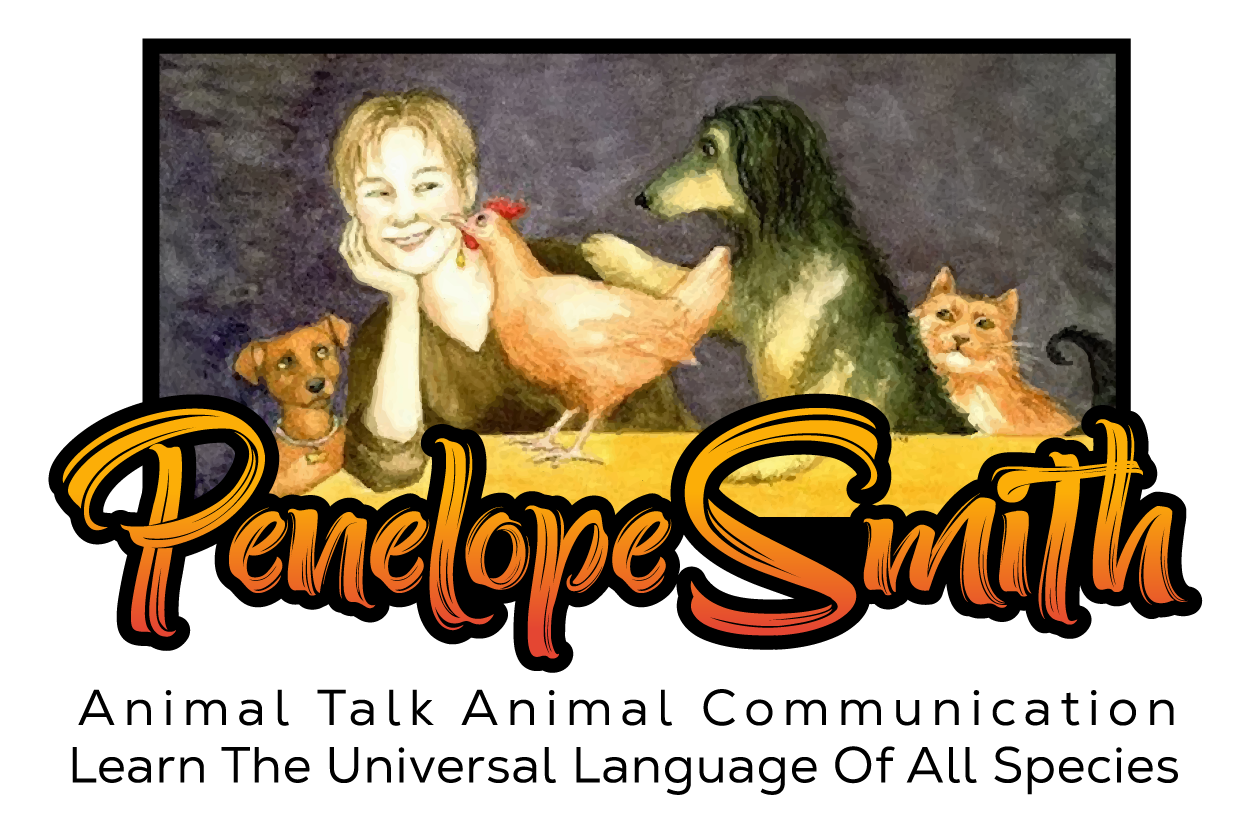Finding Lost Animals - Part 2
February 10, 2018 Filed in:
Finding Lost AnimalsBrenda Fullick interviewed animal communicators about finding lost animals for an article in Species Link - The Journal of Interspecies Telepathic Communication, spring 2004, when I was editor and publisher. This edited section of the article is full of helpful tips for people whose animals are lost.
Where Oh Where Has My Little Dog Gone?
The most difficult, daunting call a communicator may ever face — the desperate plea to find a missing animal — can also be the most fascinating.
Barb Monroe’s Doberman, Chance, and his German shorthaired pal, Pepper, escaped from their yard one day for some sightseeing in Toledo, Ohio. When Pepper came home from their romp, the friendly, outgoing Chance wasn’t with her.
Barb wasted no time mobilizing her friends for the search, which included a massive flyer-posting campaign. Meanwhile, one of Barb’s friends, communicator Jannel Beilhart, asked Chance what happened. Jannel saw him getting into a pickup truck with a man. She saw a picture of the back of the house where he was being held, and she heard trains.
The information was good, as far as Barb and Jannel knew, but it wasn’t enough. So Barb consulted communicator Beth Lynch of Lusby, Maryland, who zeroed in for more precise details: Beth said the man who took Chance was driving a red pickup, playing country music on the radio. The friends enlisted the help of a third communicator, Sharry Boyers of Wauseon, Ohio, who confirmed what Beth had heard.
Barb quickly decided to make the best of the clues she had. She called the biggest country music radio station in Toledo, asking if they’d run a public-service announcement to help find her missing dog. The crew at the radio station thought Barb’s story was both hilarious and quirky — perfect fodder for broadcast banter — so they put her on the radio to entertain their listeners. They let Barb explain that her dog had been stolen by a country music fan driving a red pickup. Then they asked her, on the air, just exactly how it was that she knew this.
“Because my dog told me,” Barb replied. Big laughs at the crazy woman.
At this point, the friends believe that the dognapper recognized his on-air description.
Within two days, Chance was seen running free again in the streets of Toledo. Several people called Barb after recognizing him from his flyers, and she was able to find and bring him home. One local woman later confirmed that she had seen Chance getting into a man’s pickup on the day he disappeared, though she had thought nothing of it at the time.
The friends may never be able to prove any of this to skeptics. They just know what they saw.
For many animal communicators, the idea of handling missing-animal calls is unappealing. The communicator is asked to wade through churning emotions — desperate psychic noise from the human callers, and often from the animals as well — knowing full well that, barring some weird coincidence or divine intervention, the case may well fade into the communicator’s own murky, unresolved puddle of feelings of incompetence and total failure. Plus, these cases can be time-consuming. Messy. Heart-wrenching.
It’s true that the bodies of missing animals may never be found, so clients might never know for sure what really happened. And that the information lost animals offer about their locations can be maddeningly vague: “I see trees.” (Well, thank you, Fluffy.) It’s also true that the tiniest, oddest-sounding clues (red pickup, country music) can be pieced together creatively for victorious rescues. Perhaps more importantly, some communicators have used these difficult cases as opportunities to fine-tune their skills — making themselves more adept practitioners overall.
Chill, Please
Communicators who handle missing-animal calls generally agree that the first step is calming the humans down. Because the reality is that people’s jagged, jarring emotions —Why didn’t I lock the screen door? What if my angel is hurt and dead and hungry and scared? — do more than interfere with the communicator’s ability to tune into the right radio station: All that panic is making it less likely that the animal will ever be found.
That’s why many communicators like to give clients visualization exercises. The jury is split on whether they help bring the animals home, but in most cases, they seem to help the human clients. Visualization is probably 40 percent for the animal and 60 percent for the person,” says Carol Schultz of Plainfield, Illinois. Often, she finds that her clients are exhausted from searching. “At some point, they need to sit down and rest. [A visualization] helps them not feel guilty about taking some time out for themselves.”
Depending on the situation, Leta Worthington of Hunt, Texas, may ask people to visualize a box beside them that they can put their grief inside. She often asks them to imagine a cord or laser beam connecting their hearts to the animals’ hearts, a bond that can help lead the animal home like a guide rope in a blinding snowstorm. Animals can always feel this connection, Leta feels. “It just seems to help create better chances for a reunion. I think it’s just an energy matrix we’re constructing together.”
Karla McCoy of Washington, Illinois, finds that people are better able to connect while they hold things that belong to their animals, such as collars, blankets, or toys.
Carol Gurney of Agoura, California, may ask clients to sit, breathe, and imagine seeing their animals in front of them. She tells them to muster up all the love in their hearts. Then she asks them to imagine sending all that love in a beam of light that animals can follow home. “It puts out a homing signal to the animal,” Carol Gurney says. When animals are truly lost, she says, they can always feel it.
Some communicators find that it helps to ask the clients to visualize sending up beacons of light from their houses. Leaving the porch light on seems to underscore the symbolism.
Dawn Hayman of Clinton, New York, has a handful of visualizations that often do the trick. She may suggest using the cord image, wrapping that cord around the animal and reeling him in. Or picturing the home property as a magnet that will draw him. But Dawn finds that the most effective visualizations are personalized, invented and customized by the clients themselves. “My technique is based on reconfirming the relationship between the person and the missing animal,” Dawn says. “They will automatically go to something that’s meaningful to the animal.”
One of Dawn’s clients went into her kitchen and burned an audio CD of her can opener, then played that familiar sound around the clock. The next morning, the woman found her cat back home, sitting beside the CD player.
Letting Go
Donna Lozito of Prescott, Arizona, has a virtually fool-proof way of calming a hysterical human so she can tune in: “I remind the client that there is a greater force that’s in charge, and what’s going to be is going to be.”
She’s not sure whether that’s why she has such good return rates — generally 60 to 70 percent of her clients get their animals back — but she figures that surrender is at least a part of her success. “At some point,” Donna tells clients, “you have to let it go and let God. We’re not really in charge of any of this. That seems to be very soothing to them. It really helps ease them into what the worst could possibly be. “You need to accept what is, and know that it is the plan and the will of the Universe.” Donna prays that the animals be returned, but only if it’s for the highest good of everyone involved.
It’s important for clients to release the clingy energy so the animals can come back again, says Jacquelin Smith of Columbus, Ohio. “There’s a harmony to it all.” Jacquelin is constantly asking for divine help, and for assistance from the animal’s guardian angels. If clients are open to it, she encourages them to pray with her. Jacquelin asks for protection for the animals, and she asks that her own skills be sharpened. “We need to ask for what we want from Spirit,” Jacquelin believes. “If we put out the energy and ask for that, as words, it gives it more power. I’m a big believer in prayer. In everything I do, I’m connected to Spirit.”
“Number 1 is praying,” agrees Nancy Marsh of Drummond Island, Michigan, who talks to clients about where they are spiritually and invites them to pray in whatever ways are comfortable to them. “A part of who I am is to help awaken humans [to] their own connection with Spirit, their own connection with themselves, their own spiritual and psychic gifts,” Nancy says that, for her, the work is about supporting the human client’s intuition and helping that person grow. “I can’t tell you that I have this great return rate. There’s a sense of confidence, and a sense of connection with the Universe.”
Animals have been known to disappear specifically to give their humans a reason to call animal communicators, especially when they live with humans who may or may not be very far along on the spiritual path. Many new clients who call in a panic about their missing animals don’t really believe in animal communication at that point, says Jim Worsley of Richmond, Virginia. “It’s almost like saying, ‘We’ve given up, but we’ll try one more thing.’”
Jim will search earnestly for the animals, but he also uses the opportunity to teach clients about bigger issues. Like surrender. “Letting go is giving in to the way things are. It’s not giving up on what you desire,” he says. “When you give in, you’re actually allowing what is to be that way.” When clients panic, “they’re only thinking of how it’s not already. It’s like a manifestation: They’re talking about what they don’t want, rather than what they do want. When you give up, it gets heavy, it’s hard, and there’s struggle. When you give in, you can search all day and still have some energy left over.” Jim thinks that by helping clients adjust the way they see things, he can create more secure places for the animals to come home to — sort of like teenage runaways who need to feel it’s okay to face their parents. “I still think we’re working with the people through what the animals are giving them to do.”
Donna reminds clients that, whatever happens, there are lessons to be learned in the process. “Really, isn’t that what life is about?”
This series on Finding Lost Animals will continue in the next post. It’s a BIG topic!
After you’ve read the foundation book, Animal Talk, reach deeper into applying telepathic communication with animals, including animals who are lost, with When Animals Speak.
photo by Kev Costello




